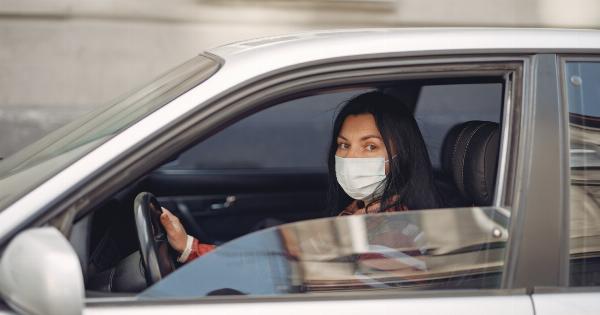Kinetic nausea, commonly known as motion sickness, is a common problem among children, particularly during travels. It occurs when there is a disconnect between the sensory organs involved in balance and motion.
This can lead to symptoms such as dizziness, nausea, vomiting, and fatigue. If your child experiences motion sickness frequently, there are several strategies you can employ to alleviate their discomfort and help them enjoy their journey.
In this guide, we will explore these strategies in detail and discuss how to deal with kinetic nausea in kids effectively.
Understanding the Causes of Kinetic Nausea
Before we dive into the solutions, it is essential to understand the underlying causes of kinetic nausea in kids. The primary reason behind motion sickness is a conflict between the signals received by the child’s brain.
These signals come from different parts of the body, including the inner ears, eyes, and sensory nerves. When the brain receives mixed signals, such as when reading in a moving vehicle, it can experience confusion and result in motion sickness.
Identifying the Symptoms of Kinetic Nausea
Recognizing the symptoms of kinetic nausea in your child is crucial in managing and preventing further discomfort. Some common symptoms to look out for include:.
- Nausea
- Vomiting
- Dizziness
- Headaches
- Drowsiness
- Pale skin
- Sweating
- Loss of appetite
If your child exhibits any of these symptoms consistently during travel or certain activities, they are likely experiencing motion sickness.
Preventing Kinetic Nausea
Prevention is key when it comes to dealing with kinetic nausea in kids. By employing a few simple strategies, you can significantly reduce the chances of your child experiencing motion sickness. Here are some preventive measures to consider:.
Eating Light and Choosing the Right Foods:
Before embarking on a journey, ensure that your child eats a light meal that is low in fat and easy to digest. Avoid giving them heavy or greasy foods as it can worsen the symptoms of motion sickness.
Additionally, providing them with a snack such as crackers or dry toast during the journey can help settle their stomach.
Avoiding Strong Odors:
Strong smells can exacerbate symptoms of motion sickness. Keep the environment well-ventilated and avoid using air fresheners or other strong fragrances in the car or any other mode of transportation.
Looking Ahead:
Encourage your child to focus on the horizon or distant objects outside the vehicle. This helps their brain to synchronize the sensory signals from their eyes and inner ears, reducing the chances of motion sickness.
Keeping Proper Hydration:
Dehydration can worsen motion sickness symptoms. Ensure your child stays well-hydrated during the journey by providing them with plenty of water or other clear fluids. Avoid sugary or carbonated drinks as they can contribute to nausea.
Taking Breaks:
If possible, plan frequent breaks during long trips. Allowing your child to get some fresh air and stretch their legs can help alleviate the symptoms of motion sickness. Take short walks or engage them in light physical activity during these breaks.
Managing Kinetic Nausea
If despite your best efforts, your child still experiences motion sickness, there are several ways to manage their symptoms. These methods can help alleviate their discomfort and make the journey more bearable for them.
Acupressure Bracelets:
Acupressure bands or bracelets are widely available and are designed to provide pressure on specific points on the wrist that can help reduce nausea. These bracelets are safe to use and can be worn throughout the journey to manage motion sickness.
Medication:
In severe cases, you may consult a pediatrician who can prescribe medication to alleviate your child’s motion sickness symptoms. These medications are typically antihistamines, which can help reduce nausea and dizziness.
However, it is essential to follow your doctor’s guidelines and consider potential side effects.
Ginger:
Ginger has long been used as a natural remedy for nausea. You can give your child ginger candies, ginger ale, or ginger-based snacks before or during the journey to help settle their stomach.
However, consult your child’s pediatrician before using ginger as a remedy.
Distraction Techniques:
Engaging your child in activities that divert their attention from motion sickness can help manage their symptoms. Encourage them to listen to music, play games, or watch a movie on a portable device.
However, avoid activities that involve too much screen time or reading, as it can worsen the symptoms.
Tips for Air Travel
When it comes to air travel, motion sickness can be a common concern among children. Here are some additional tips to help your child cope with motion sickness on airplanes:.
Choose the Right Seats:
Seats over the wings provide the least amount of motion during the flight. Opt for these seats when booking your tickets to minimize the effects of turbulence and reduce the chances of motion sickness.
Encourage Swallowing or Chewing:
Sucking on a pacifier, chewing gum, or drinking water can help reduce the pressure in your child’s ears, which can contribute to feelings of discomfort during takeoff and landing.
Keep the Visual Field Stable:
If your child is prone to motion sickness, avoid looking out the window during takeoff, landing, or when the plane is experiencing turbulence. Encourage them to close their eyes or focus on fixed objects inside the cabin instead.
Conclusion
Motion sickness can be distressing for both children and parents, but with the right strategies, it can be effectively managed.
By employing preventive measures and utilizing various remedies, you can help your child overcome the symptoms of kinetic nausea and make their journeys more enjoyable. Remember to consult your child’s pediatrician for personalized advice and ensure their safety during the process.





























